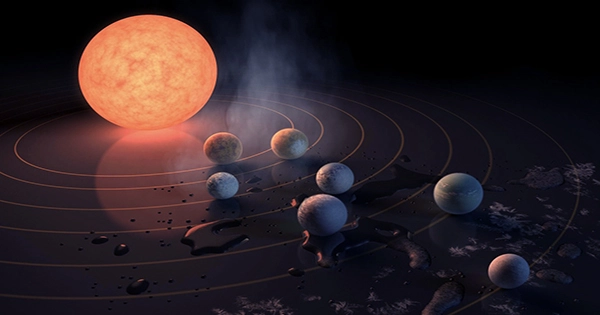WASP-189 b, one of the extreme known exoplanets, has a layered atmosphere similar to Earth, according to astronomers. However, that is where the parallels end. We are not packing our belongings and going to WASP-189 b, a world twice the mass of Jupiter with temperatures in the thousands of degrees. Its proximity to its star is what makes it so hot. It takes just 2.7 days to orbit the star, and is 20 times closer to it than the Earth is to the Sun. Researchers can examine its environment in great detail because to its alignment. The worldwide team discovered iron, chromium, vanadium, magnesium, and manganese in its atmosphere, as well as titanium oxide, according to Nature Astronomy.
“We measured the light traveling through the planet’s atmosphere as it came from the planet’s host star.” The gases in its atmosphere absorb some of the starlight, similar to how Ozone in Earth’s atmosphere absorbs some of the sunlight, and therefore leave their own ‘fingerprint.’ “Bibiana Prinoth of Lund University, the study’s principal author, said in a release.”We were able to identify the corresponding compounds with the help of HARPS [ESO’s planet-hunter].” On other exoplanets, titanium oxide has connected to an ozone-like layer and stratosphere-like layers, making this discovery extremely fascinating. These discoveries, however, went a step further, uncovering evidence of other layers.
“We discovered that the ‘fingerprints’ of the various gases were slightly different from what we expected throughout our investigation. We suspect that high winds and other processes are to blame for the changes. And because different gases’ fingerprints were altered in different ways, we believe this indicates that they exist in different layers – similar to how the fingerprints of water vapour and ozone on Earth would appear differently altered from afar because they mostly occur in different atmospheric layers,” Prinoth explained.
There is a lot we do not know about exoplanet atmospheres, and to be fair, the atmospheres of the Solar System’s gas giants are still a mystery. This new study elucidates how these faraway worlds are unlikely to have a single-layer atmosphere, emphasizing the importance of appreciating their three-dimensional complexity. “We believe that in order to completely comprehend these and other sorts of planets, including those that are more comparable to Earth, we must appreciate the three-dimensional character of their atmospheres.” This will necessitate advancements in data processing techniques, computer modeling, and fundamental atmospheric theory, according to research co-author Kevin Heng.















